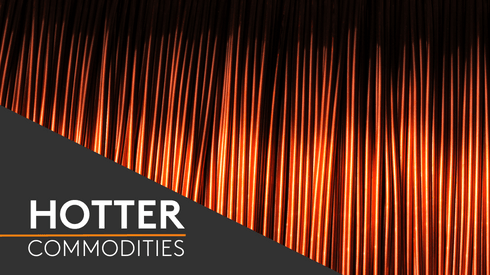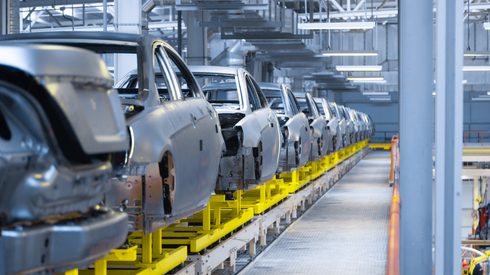Lightweight, strong, durable and infinitely recyclable, aluminium is an important input for several technologies critical to energy transition and, at the same time, is one of the industries responsible for a significant part of the global carbon footprint but for which they are few alternatives.
Aluminium production is among the top eight hard-to-abate industries in the world, according to the World Economic Forum report released in November 2023.
Some of the main factors affecting the US low-carbon aluminium industry are:
- Aluminium is critical for the energy transition
- Most decarbonization efforts in the US aluminium industry are focused on scrap recycling as the country has limited renewable power generation to lower the industry’s Scope 2 emissions
- The US imports most of its primary aluminium from Canada, which benefits from hydroelectric power to produce aluminium at or below 4 tonnes of CO2 per tonne of aluminium.
- New anode technologies are being developed to eliminate direct emissions from use of carbon anodes during smelting
- Funding by the Department of Commerce for a new green smelter in the US is a possible game-changer for industry stakeholders
The US aluminium industry has been seeking to lower its carbon footprint, with consumers in the automotive, packaging, energy and consumer products segments inquiring about sustainably produced materials while they attempt to lower their own carbon footprints.
The low-carbon aluminium market has been trying to standardize; a definition of “low-carbon” has been crucial. One consideration playing a crucial role in this definition is recycled content.
The current aluminium production and life cycle process is shown in the diagram below:
North America and Europe use different methods for tracking carbon emissions of recycled aluminium. The two approaches end with two different carbon-emission calculations for recycled aluminium content, making it difficult to standardize.
Another consideration is to whether take into account Scope 3 emissions. Scope 3 emissions are the result of activities from assets not owned or controlled by the company. They include considerations such as the carbon footprint of employees driving to work, making it much more difficult to quantify and track.
With an increasing focus on decarbonization and the need for standardization and to provide clarity into pricing in this market, Fastmarkets launched its first low-carbon aluminium differentials for Europe in 2021.
These were the aluminium low-carbon differential P1020A, Europe and the low-carbon value-added product differential, which was later split into aluminium low-carbon differential billet, Europe and aluminium low-carbon differential value-added product ex-billet, Europe.
Fastmarkets also launched two low-carbon aluminium differentials for the US market in 2023.
Both the aluminium low-carbon differential P1020A, US Midwest and the aluminium low-carbon differential value-added product, US Midwest do not take into consideration recycled content and limit their definition of ‘low-carbon’ to 4 tonnes of carbon-dioxide emitted per tonne of aluminium produced (4tCO2e/tAl).
Reducing Scope 1, 2 and 3 emissions in the aluminium value chain
The US Environmental Protection Agency (EPA) defines Scope 1 emissions as direct GHG emissions that occur from sources that are controlled or owned by an organization.
Find out how the Scope 1 emissions from aluminium production are being reduced in the US and Canada.
EPA defines Scope 2 emissions as a company’s indirect GHG emissions associated with the purchase of electricity, steam, heat, or cooling.
Find out how the Scope 2 emissions from aluminium production are being reduced in the US and Canada.
Scope 3 emissions are the result of activities from assets not owned or controlled by the reporting organization, but that the organization indirectly affects in its value chain, including both its upstream and downstream activities, according to the EPA.
Find out how the Scope 3 emissions from aluminium production are being reduced in the US and Canada.
Scope 1 – new anodes
Traditionally, aluminium smelting produces carbon dioxide via the chemical process to derive aluminium from the intermediate product, aluminium oxide, which is also known as alumina.
Carbon anodes are used as electrolytes inserted into molten cryolite containing dissolved alumina, which releases aluminium while oxygen bonds with carbon to produce carbon dioxide.
The biggest technological breakthrough in decarbonizing aluminium production came from the aluminium producer Alcoa, which has been developing a new inert anode technology, ELYSIS, in a joint venture with the miner Rio Tinto.
The company plans to complete the technology demonstration at 450 kA between 2024 and 2025. Following this milestone, ELYSIS will move to the phase of making its technology commercially available for deployment.
ELYSIS helps eliminate all direct GHG emissions from the aluminium smelting process and is the first technology ever that emits oxygen as its by-product and can be retrofitted to existing smelters, potentially eliminating 6.5 million tonnes of GHG emissions per year in Canada alone, according to the ELYSIS website.
Scope 2 – energy
Most of the aluminium industry’s carbon dioxide emissions come from electricity use during the smelting process. According to data from the International Aluminium Institute, 9.3tCO2e/t of a total of 15.1tCO2e/t in global emissions result from electricity use, making up the industry’s 61.59% of GHG emissions.
With limited access to renewable energy and heavily reliance on fossil fuels for its power source, the US aluminium industry’s Scope 2 emissions remain high. This makes the country’s aluminium industry among the world’s highest emitting producers in the world, according to a 2022 report by the US-based Global Efficiency Intelligence.
The US aluminium industry produced 2,462,053 tonnes of carbon dioxide in 2022, according to the United States Environmental Protection Agency (EPA) website.
The primary aluminium industry in the US is the fourth-largest emitting aluminium industry in the world, behind India, China and Australia, according to a 2022 report by non-profit organization BlueGreen Alliance, based in Washington, DC.
The energy-intensive aluminium industry has also been idling or curtailing its smelters due to surging energy costs, with the curtailing of the Missouri-based Magnitude 7 smelter leaving only four primary aluminium smelters in the country.
Of the currently operational four smelters, only one, Alcoa’s Massena smelter in upstate New York, is powered by renewable hydropower.
But the US government, looking to strengthen its critical minerals supply chains, has taken an important step towards a greenfield low-carbon aluminium smelter in the US. In a move lauded as a game-changer by primary aluminium industry stakeholders in the country, the Department of Energy announced in March 2024 that a green aluminium smelter project by Century Aluminum was selected to enter negotiations for $500 million in funding.
When fully operational, the smelter by Century Aluminum should double the US’ current primary aluminium capacity.
Scope 2 emissions are significantly lower for the Canadian aluminium industry. By using hydro-powered electricity and innovative technologies, Canadian aluminium producers have the lowest carbon footprint in the world compared with other, larger producers, according to government of Canada.
The United States was the largest recipient of Canada’s aluminium products exports in 2022, buying nearly 92% of the total value of the country’s aluminium exports, according to the Canadian government.
The US imported 1,667,274,902 kilograms, or 74.25% of its total unwrought, unalloyed aluminium imports, from Canada in 2023, according to data from the United States International Trade Commission.
Scope 3 – scrap
With the US primary aluminium industry lacking renewable-powered electricity sources, it has turned to scrap sources to decarbonize its aluminium production.
“The US aluminium industry is getting greener not from prime production but from extending its scrap recycling,” Fastmarkets principal consultant Kirstine Veitch said. “That is the US’s route to greening aluminium production in the country.”
Besides electing a green primary smelter, the US Department of Energy (DOE) has also elected three aluminium projects that focus on decarbonizing and making more efficient aluminium scrap recycling to enter negotiations for funding.
But a definition of what is considered ‘scrap’ is essential in decarbonization; the lack of standardization in this area hinders the industry’s decarbonization efforts, according to Veitch.
This need to differentiate between runaround plant manufacturing scrap, pre-consumer scrap and end-of-life scrap was a concern voiced by many industry participants to Fastmarkets. They also emphasized the need to use more end-of-life scrap to truly decarbonize the industry.
North America uses the cut-off method for all aluminium scrap, including both pre-consumer and post-consumer scrap, where scrap is assumed to carry zero carbon burden. In contrast, Europe uses the co-product approach, which follows the material throughout its life cycle. The carbon footprint burden is shared between every output on its way from primary material to scrap.
“If a producer is using inefficient manufacturing processes and their smelter is inefficient and they remelt pre-consumer scrap, for example from purchasing new extrusion scrap from their client, that is closed loop, so it comes back into the system,” Veitch said.
“But if a new party buys this scrap, it is still process scrap and has the same carbon dioxide footprint as originally manufactured product,” she added.
But if this has gone into a product – “if, for example, it was made into a beverage can, which has a relatively quick turnaround to become scrap, it has reached end of life so it can be carbon-zero,” she said.
End-of-life aluminium scrap offers one of the biggest opportunities in advancing the industry’s decarbonization and careful sorting and reporting is necessary to ensure both safety and transparency, industry participants agree.
Whether you are a buyer or seller of base metals products, it’s important to keep track of the forces impacting market conditions and price movements. Fastmarkets’ base metals price forecasts and analysis can help you easily break down complex market conditions to understand the forces influencing price volatility – and act with confidence. Download a free sample of our base metals forecast today.






